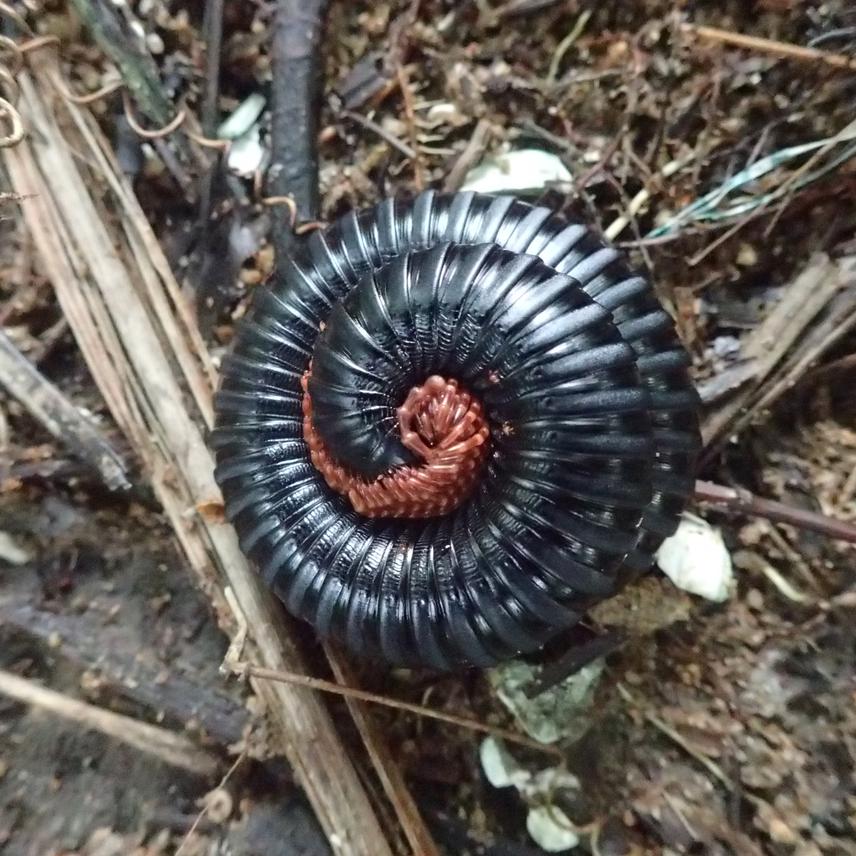Armand Richard Nzoko Fiemapong
Other projects
1 Nov 2016
Impact of Land Use and Forest Disturbance on Millipede Diversity and Distribution in the Forests of the Littoral Region of Cameroon: Conservation Implication
4 Mar 2022
Conservation of the Giant African Millipede Community in the Cameroon’s Rain-Forest Zones : Distribution, Threats and Research Needs
Biodiversity inventories are essential for planning, managing and monitoring any ecosystem, especially those located in tropical protected areas because of their rich biological diversity. Surveys and inventories are considered by conservationists as representing solid investments, as they are essential for determining the level of diversity within an area including the identities and number of taxa, their distributions and the diversity of the communities they form. In the Afrotropical region, the effort of biodiversity conservation is focused on vertebrates, as opposed to just a few studies that have been devoted to terrestrial invertebrates. Millipedes are among the least known terrestrial arthropods in tropical ecosystems, yet they are largely endemic and habitat specific. This study aims at determining the diversity, distribution and conservation status of millipedes in the Douala-Edéa Wildlife Reserve, Cameroon.

Spiropoeus fischeri (Brandt, 1833).
Within invertebrates, the class Diplopoda (millipedes) is a very important, mega-diverse and abundant group, this being especially true for tropical forest biomes. Although extremely important in terms of taxonomic diversity (about 80,000 species expected and ca. 12000 species described), millipedes are mostly detrivorous, mesophilous cryptic, slow-moving animals restricted to the tropics (David, 2015, David & Handa 2010). Being largely forest-dwelling, they are still poorly investigated, even though they play important roles in forest ecology (Foster & Claeson, 2011).
Millipedes are sensitive to habitat changes resulting from forest disturbance, for instance, in terms of changes in light regimes, microclimates, the availability of dead wood and soil compaction, making them important indicators of the ecological impacts of habitat disturbance (Hamer, & Slotow, 2002). Among these important soil/litter fauna components, numerous species are endemic to Cameroon; many are poorly-known, while some are new to science. The millipede faunas of Cameroon forested regions remains largely neglected. The existing information provides no basis for making conservation decisions in this important hotspot of biodiversity. Generally, millipedes suffer greatly in terms of interest in conservation and worldwide protection.
In Africa, only few species have been the subject of special protection measures. Here we intend to outline the challenges and solutions to the integration of millipedes into biodiversity management objectives and monitoring in protected areas in Cameroon. We shall provide a comparative record of millipede species diversity and their distributions across the different habitat types in the study area. We shall also obtain a better knowledge of biodiversity and its changes in the study region. The impact of anthropogenic factors on millipede diversity and detailed distributions in the study site will also be traced and evaluated. Conclusions of the study will be handed to authorities in charge of wildlife protection and will serve as a base for the elaboration of conservation strategies for millipedes.